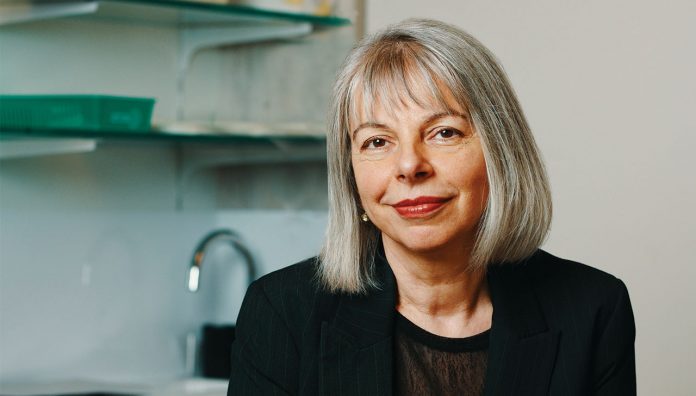Dimitra Tsucalas FPS, co-owner of Ascot Vale Supercare Pharmacy, has seen it all. From late-night triage, shift workers, opioid seekers and everything in between, she says the best thing about 24-hour trade is the ability for patients to access a healthcare professional at any time.
What are the patient benefits of Supercare 24-hour pharmacies?
The benefits are essentially that they can approach a health professional to ascertain whether they need to get something that can resolve their problem reasonably quickly or [whether] they need to get to the next level to an Emergency Department or see a doctor; whether it’s something they need to worry about or not.
Essentially, they are seeing a health professional to triage – to either treat at a primary care level or move into the next stage – and they’re accessible at all hours.
So, at 2am when the itch becomes absolutely intolerable they can come and see someone. Or if symptoms are so problematic that it’s causing them anxiety they can come and see someone and decide whether they need to go to the Emergency Department.
What are challenges you might face after hours?
One of the biggest challenges was managing patients seeking over-the-counter codeine products. Now that has shifted to codeine containing and/or other medicines that are dependence inducing or potentially dangerous.
This issue is addressed to a great extent by SafeScript. But the challenge with SafeScript is that the pharmacist then becomes a police officer.
Certainly at night, people will try to obtain medicines when they shouldn’t. A refusal to fill a script can create the potential for confrontation – both physical and verbal. For young graduates or new employees working overnight, it can be quite confronting.
How long has your practice been using SafeScript?
Since the beginning. We use FRED pharmacy software, so any SafeScript warnings pop up as an alert, urging us to look into the person’s supply history.
What are you most proud of from your involvement in a Supercare pharmacy?
It is a big job transitioning from eight staff to 28 staff. It introduces a lot of new learning opportunities and challenges and you’ve got to keep making it work. You are professionally stimulated. I think all after-hours work can be, especially if you are working on your own.
So, pharmacists working on their own of an evening and overnight have to make calls that they don’t make necessarily on their own through the day. They can’t call a doctor and they can’t call a colleague so they will have to make the call. I think it’s empowering. The best thing about 24-hour trade is professional accessibility.
Dimitra Tsucalas on a typical overnight shift11.00 pm Unsure about whether to go to hospital for stitches, a mum brings in her two-year-old boy with a minor gash over his eyebrow. It is a small, clean cut. The bleeding has stopped and there are no red flags in his behaviour or appearance. I suggest some Solosite® gel to keep it moist and promote healing, and tell her to monitor for redness, inflammation or easily visible pus. I tell her to come back in or see a GP for review in 1–2 days if the wound is not healing. Midnight A mother brings in her daughter, 17, who has an exam the next day. Unwell and unable to focus or study, she has urinary frequency indicating a possible urinary tract infection. Her options: call overnight doctor services for assessment and possibly an antibiotic script if indicated; purchase hexamine as a stop-gap until her GP can be seen next morning or after her exam; or try the Instant-Script® service which assesses and allows for a trimethoprim script so she can begin treatment before review by her GP. 1.00 am A pregnant lady is brought in by her partner with dizziness, weakness and fainting. She is unable to keep anything down so dehydration is possible. We provide a private consult room for her to lie down while taking her blood pressure and blood sugar, and then decide to call an ambulance. She is taken to the Emergency Department for assessment. 3.00 am A regular customer arrives with a script she forgot to fill earlier. She asks about an itchy eye corner for which she had already tried allergy drops numerous times in recent months. A slightly elevated area near her nose bridge is visible, which is still itchy. I don’t supply her a product. Instead, I suggest a referral to an ophthalmologist or at least an optometrist for triage. She calls a month later: it was a malignant growth which has been removed. She gives her thanks. Dawn The phone rings. It is a dad with an 18-month-old baby calling about a dose of paracetamol, but he only has a bottle of Panadol® 5–12 Years at home. He asks if this is ok, and about the size of the dose. I tell him that it’s fine and ask how much the baby weighs so I can calculate the dose. |






 ‘We’re increasingly seeing incidents where alert fatigue has been identified as a contributing factor. It’s not that there wasn’t an alert in place, but that it was lost among the other alerts the clinician saw,’ Prof Baysari says.
‘We’re increasingly seeing incidents where alert fatigue has been identified as a contributing factor. It’s not that there wasn’t an alert in place, but that it was lost among the other alerts the clinician saw,’ Prof Baysari says.








